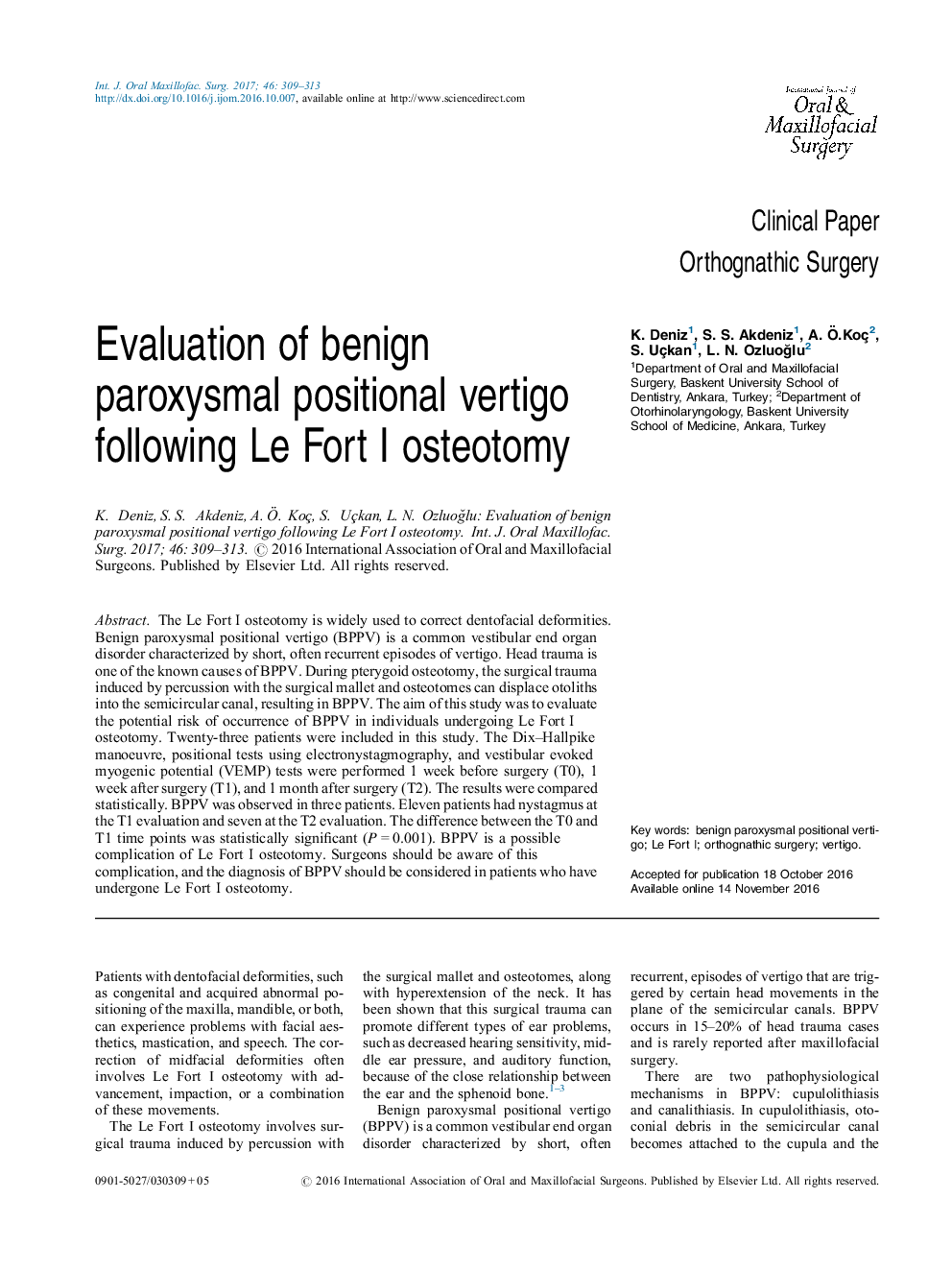| Article ID | Journal | Published Year | Pages | File Type |
|---|---|---|---|---|
| 5639025 | International Journal of Oral and Maxillofacial Surgery | 2017 | 5 Pages |
The Le Fort I osteotomy is widely used to correct dentofacial deformities. Benign paroxysmal positional vertigo (BPPV) is a common vestibular end organ disorder characterized by short, often recurrent episodes of vertigo. Head trauma is one of the known causes of BPPV. During pterygoid osteotomy, the surgical trauma induced by percussion with the surgical mallet and osteotomes can displace otoliths into the semicircular canal, resulting in BPPV. The aim of this study was to evaluate the potential risk of occurrence of BPPV in individuals undergoing Le Fort I osteotomy. Twenty-three patients were included in this study. The Dix-Hallpike manoeuvre, positional tests using electronystagmography, and vestibular evoked myogenic potential (VEMP) tests were performed 1 week before surgery (T0), 1 week after surgery (T1), and 1 month after surgery (T2). The results were compared statistically. BPPV was observed in three patients. Eleven patients had nystagmus at the T1 evaluation and seven at the T2 evaluation. The difference between the T0 and T1 time points was statistically significant (PÂ =Â 0.001). BPPV is a possible complication of Le Fort I osteotomy. Surgeons should be aware of this complication, and the diagnosis of BPPV should be considered in patients who have undergone Le Fort I osteotomy.
